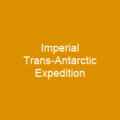The Ross Sea party was a component of Sir Ernest Shackleton’s Imperial Trans-Antarctic Expedition 1914–17. Its task was to lay a series of supply depots across the Great Ice Barrier from the Ross Sea to the Beardmore Glacier. Organisational and financial problems delayed their start until December 1914, which shortened their first depot-laying season.
About Ross Sea party in brief

This success proved ultimately without purpose, because Shackleton’s main expedition was unable to land after Endurance was crushed in the Weddell Sea ice. Four Albert Medals were awarded to members of the party, two posthumously. Shackleton later wrote that those who died gave their lives for their country as surely as those who gave up their lives in France or Flanders. He believed that there remained “one great main objective of Antarctic journeyings—the crossing of the South Polar continent from sea to sea. Shackleton estimated that the crossing would cover approximately 1,800 miles, a distance too great for his party to carry all its supplies. In support of the main journey, therefore, a separate Ross Sea Party would land in McMurdo Sound and would lay aseries of supply. depots. It would also carry out scientific investigations. The party’s vessel would be a recently used ship, SY Aurora, used by Douglas Mawson and the Australasian Antarctic Expedition. To lead the expedition, Shackleton chose Aeneas Mackintosh, a former Merchant Navy officer who had been on the expedition until his participation in Nimrod. He would later provide the leader of his Ross Sea support party with conflicting instructions on the task; stating on one hand it was of ‘supreme importance’ to the depots but on the other that he would be carrying what he described as ‘sufficient provisions’.
You want to know more about Ross Sea party?
This page is based on the article Ross Sea party published in Wikipedia (as of Nov. 05, 2020) and was automatically summarized using artificial intelligence.







